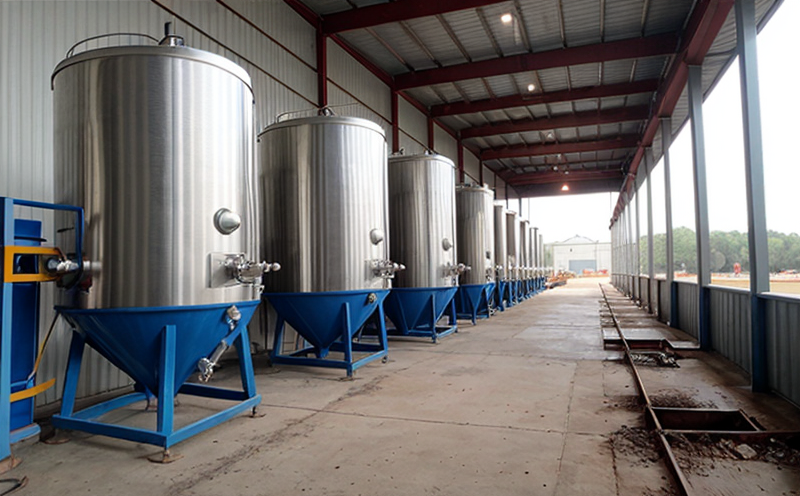Separator vessel inspection
The inspection of separator vessels is a critical aspect in ensuring the safe and efficient operation of pressure vessels used in various industries such as petrochemicals, oil & gas, pharmaceuticals, and chemical processing. Separator vessels are designed to separate different phases or components within a fluid stream, which makes them indispensable for maintaining process integrity.
These vessels often operate under severe conditions involving high pressures and temperatures, which can lead to potential failures such as leaks, ruptures, or corrosion if not properly maintained. Regular inspections play a vital role in preventing these issues by identifying signs of wear and tear early on. This ensures that any necessary repairs are conducted before they escalate into more serious problems.
The inspection process typically involves visual examination using non-destructive testing (NDT) methods like ultrasonic testing (UT), radiography, magnetic particle testing (MPI), and liquid penetrant inspection (LPI). These techniques allow inspectors to evaluate the internal and external surfaces of the vessel without causing damage. By employing advanced technology, we can achieve precise measurements and comprehensive assessments.
During an inspection, it is also common practice to measure wall thickness using ultrasonic testing (UT) and magnetic particle testing (MPI), which helps detect thinning due to corrosion or erosion. Additionally, hydrostatic testing may be performed by filling the vessel with water at specified pressures to check for leaks or deformations.
The integrity of separator vessels is paramount in ensuring safety standards are met across all sectors where they operate. Proper inspection procedures help maintain compliance with relevant regulations such as ASME Section VIII Division 1 and II, EN 13445, and ISO/TS 25010. These standards provide guidelines for designing, manufacturing, inspecting, and maintaining pressure vessels.
Our laboratory adheres strictly to these international norms when conducting separator vessel inspections. Our team of experts uses state-of-the-art equipment and follows rigorous protocols to ensure accurate results every time. The goal is not only to meet but exceed industry expectations by providing reliable data that can be used for decision-making purposes within organizations.
Scope and Methodology
| Inspection Method | Description | Relevance |
|---|---|---|
| Visual Examination | A thorough inspection of the vessel's exterior for visible signs of damage or degradation. | This step helps identify any surface-level issues that could indicate underlying problems. |
| Ultrasonic Testing (UT) | An advanced technique used to measure wall thickness and detect internal flaws. | UT provides precise data on the vessel's structural integrity, aiding in informed maintenance decisions. |
| Magnetic Particle Inspection (MPI) | Used to locate surface-breaking defects by applying a magnetic field and observing where particles accumulate. | This method is particularly effective for identifying cracks or other discontinuities on the vessel's surface. |
| Radiography | An imaging technique utilizing X-rays or gamma rays to produce images of internal structures. | Provides detailed views of the vessel’s interior, helping detect hidden defects that might otherwise go undetected. |
| Liquid Penetrant Inspection (LPI) | A non-destructive test used to locate surface-breaking discontinuities by applying a penetrant and developer materials. | Effective in detecting very small flaws that may not be visible under other inspection methods. |
| Hydrostatic Testing | The process of filling the vessel with water at specified pressures to check for leaks or deformations. | This test ensures the vessel can withstand operating conditions without failure. |
Each inspection method serves a unique purpose, contributing valuable information towards understanding the overall condition of the separator vessel. By combining these techniques, we achieve a holistic assessment that covers both surface-level observations and deeper structural evaluations.
Eurolab Advantages
- Comprehensive Expertise: Our team comprises highly skilled professionals who possess extensive experience in the field of pressure vessel inspections.
- State-of-the-Art Equipment: Utilizing cutting-edge technology ensures accurate and reliable inspection results, leading to better-informed decisions.
- Strict Compliance: Adherence to international standards like ASME Section VIII Division 1 & II, EN 13445, and ISO/TS 25010 guarantees that our inspections meet the highest quality benchmarks.
- Customized Solutions: Tailoring our services to fit each client's specific needs ensures we provide solutions that are effective and efficient for their particular circumstances.
We take pride in delivering exceptional service, backed by years of experience and commitment to excellence. With Eurolab, you can rest assured knowing your separator vessel inspections will be conducted with the utmost precision and care.





